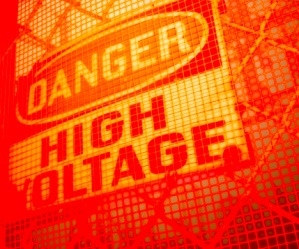 According to NIOSH, at least one of the following five factors was present in all 224 incidents evaluated by the NIOSH fatality investigation program:
According to NIOSH, at least one of the following five factors was present in all 224 incidents evaluated by the NIOSH fatality investigation program:
(1) established safe work procedures were either not implemented or not followed;
(2) adequate or required personal protective equipment was not provided or worn;
(3) lockout/tagout procedures were either not implemented or not followed;
(4) compliance with existing OSHA, NEC, and NESC regulations were not implemented; and
(5) worker and supervisor training in electrical safety was not adequate.
Most of the 224 occupational electrocution incidents investigated could have been prevented through compliance with existing OSHA, NEC, and NESC regulations; and/or the use of adequate personal protective equipment (PPE).
All workers should receive hazard awareness training so that they will be able to identify existing and potential hazards present in their workplaces and relate the potential seriousness of the injuries associated with each hazard. Once these hazards are identified, employers should develop measures that would allow for their immediate control.
Based on an analysis of these data, to reduce occupational electrocutions, NIOSH advises employers to:
• Develop and implement a comprehensive safety program and, when necessary, revise existing programs to thoroughly address the area of electrical safety in the workplace.
• Ensure compliance with existing OSHA regulations Subpart S of 29 CFR 1910.302 through 1910.399 of the General Industry Safety and Health Standards and Subpart K of 29 CFR 1926.402 through 1926.408 of the OSHA Construction Safety and Health Standards.
• Provide all workers with adequate training in the identification and control of the hazards associated with electrical energy in their workplace.
• Provide additional specialized electrical safety training to those workers working with or around exposed components of electric circuits. This training should include, but not be limited to, training in basic electrical theory, proper safe work procedures, hazard awareness and identification, proper use of PPE, proper lockout/tagout procedures, first aid including CPR, and proper rescue procedures.
Provisions should be made for periodic retraining as necessary.
• Develop and implement procedures to control hazardous electrical energy which include lockout and tagout procedures and ensure that workers follow these procedures.
• Provide those workers who work directly with electrical energy with testing or detection equipment that will ensure their safety during performance of their assigned tasks.
• Ensure Compliance with the National Electrical Code and the National Electrical Safety Code.
• Conduct safety meetings at regular intervals.
• Conduct scheduled and unscheduled safety inspections at worksites.
• Actively encourage all workers to participate in workplace safety.
• In a construction setting, conduct a jobsite survey before starting any work to identify any electrical hazards, implement appropriate control measures, and provide training to employees specific to all identified hazards.
• Ensure that proper personal protective equipment is available and worn by workers where required (including fall protection equipment).
• Conduct job hazard analyses of all tasks that might expose workers to the hazards associated with electrical energy and implement control measures that will adequately insulate and isolate workers from electrical energy.
• Identify potential electrical hazards and appropriate safety interventions during the planning phase of construction or maintenance projects. This planning should address the project from start to finish to ensure workers have the safest possible work environment.
The fatality data indicate that although many companies had comprehensive safety programs, in many cases they were not completely implemented.
This underscores the need for increased management and worker understanding, awareness, and ability to identify the hazards associated with working on or in proximity to electrical energy. It is the responsibility of management to provide a safe workplace for their workers and to develop and implement a comprehensive safety program.
In some cases, this may entail the development of additional worker training, and/or the evaluation and restructuring of existing safety programs. Management should also provide adequate training in electrical safety to all workers and strictly enforce adherence to established safe work procedures and policies. Additionally, adequate personal protective equipment should be available where appropriate. Information or assistance in accomplishing these measures can be provided by OSHA, electrical safety consultants, or other agencies or associations that deal with electrical safety. A strong commitment to safety by both management and workers is essential in the prevention of severe occupational injuries and death due to contact with electrical energy, according to NIOSH.


